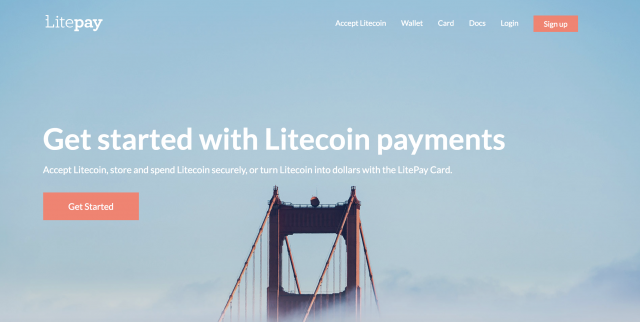
Litecoin (LTC), LitePay and What Could Have Been

Litecoin (LTC)–On Monday, the Litecoin Foundation released news that has been coming for some time now: LitePay, a processor to implement Litecoin for payment anywhere that accepted traditional debit, was being shuttered for good.
What was LitePay?
Originally, LitePay was intended as a two-way processor to allow both merchants and consumers to easily accept and pay with LTC as they would traditional fiat. The merchant processor allowed small businesses and independent vendors to offer Litecoin as a form of payment, while still retaining their sales in fiat. The process worked by charging a small upfront fee (1%, less than the 4% for traditional credit cards) and exchanging the LTC on the consumer end of the transaction for fiat to be deposited by the merchant. The benefit was twofold: merchants could increase their exposure and welcome in the growing community of cryptocurrency holders, while Litecoin advocates and investors had a potential means for spending their acquired currency. LitePay’s debit card system, which was the first leg of the project to be suspended, was supposed to allow Litecoin holders the ability to spend LTC anywhere that accepted debit. Card members loaded a pre-set amount of LTC, which could be spent like cash, minus the fee for transacting LTC into fiat.
Why was LitePay Important?
Even with the LitePay project shutting down, the principles of LitePay are still useful to growing Litecoin adoption and building a workable future for the currency.
If anything, the most promising feature in LitePay was the ability to reconcile cryptocurrency buyers and sellers with those not looking to transact in crypto. Adoption is not about forcing other people to use your technology. Instead, the most lasting approach is one that happens in an organic manner, with people coming to their own conclusions about the benefits of cryptocurrency. LitePay allowed for both Litecoin holders and non-LTC dependent merchants to interact in a transaction, opening the door for crypto-based commerce that does not necessitate total acceptance. It’s difficult to imagine a future–at least one in the next decade–that is transacted entirely in Litecoin, but it is plausible to imagine one where the use of cryptocurrency becomes a global preference for payment, such as choosing between using cash or debit card.
To be clear, LitePay was not the first implementation of a cryptocurrency payment processor. BitPay has been on the market since 2011, and allows the same features that LitePay was aiming to implement, but for Bitcoin. However, in an effort to grow adoption in the industry, payment processors are an ideal avenue if a bit a limited in long-term scope. While there are hardcore factions of the community that want to push only crypto to crypto transactions (where both buyer and seller use and keep Litecoin), conversion processors open the door for wider acceptance.
How does the Litecoin Community Respond?
As this reddit user pointed out, nothing was lost in the failure of the LitePay project. Sure, the Litecoin brand loses a little face to industry investors and media followers. The community also misses out on the opportunity to experiment with a seemingly impressive technology. But at the end of the day, Litecoin lost very little from the failed implementation of the LitePay project, other than the hours and costs that went into development.
In the grand scheme of the arms race for improvement and building scalable, usable currencies, LitePay can be held up as a lesson in success, not failure. It’s a common refrain among startups and Silicon Valley to fail and fail fast along the way to success. There are principles and ideas within the sunken LitePay project that will help shape and dictate both the future of the Litecoin foundation and the development of Litecoin. The Litecoin community is in a rare position to address and dictate how it will respond to failure. Every investor in cryptocurrency knows the risks involved in waging money on assets backed solely by speculation, so why can’t that risk be more tolerated in the developmental projects? Everyone wants cryptocurrency, particularly the flagship coins like Litecoin and Bitcoin, to succeed in a big way and enact disruptive, revolutionary changes in society. The road map to that end goal is not one that can be achieved without the presence of failure.
To quote the Reddit user RedRage04, “This is a coin for pioneers, not pilgrims.” It’s understandable that investors and community members in Litecoin and cryptocurrency are feeling a bit insecure at the moment. Most currencies are down 60-90% in value since January, and the entire market is heading into what looks like a year-long slump. The industry needs home-runs. Litecoin needs a big win. Having a failure like LitePay only contributes to the narrative that the rest of the world sees: crypto is some geeky, niche market destined to fail. That’s okay. While outsiders continue to view Litecoin and the shortcomings of crypto with a I-told-you-so arrogance, the community and development will continue onward. LitePay may have been a flop, but at some point, real innovation will stick.